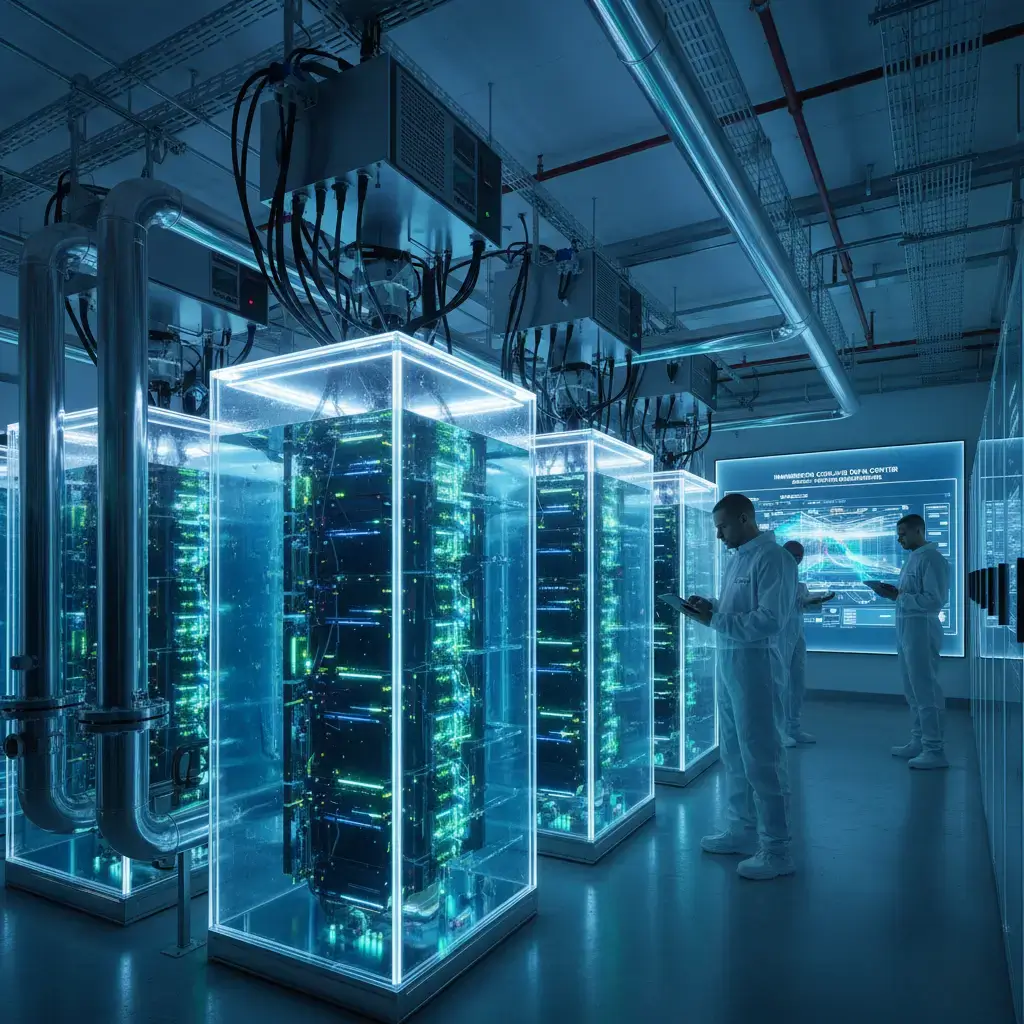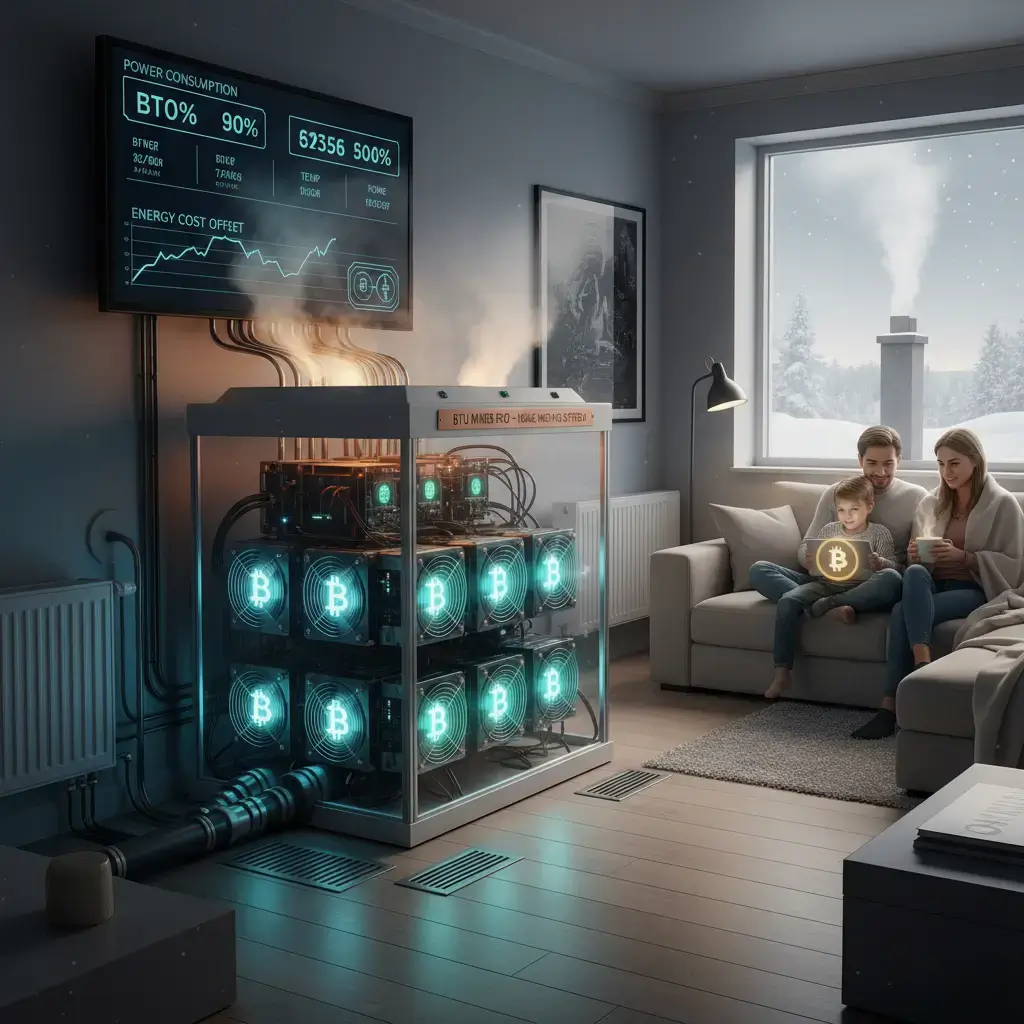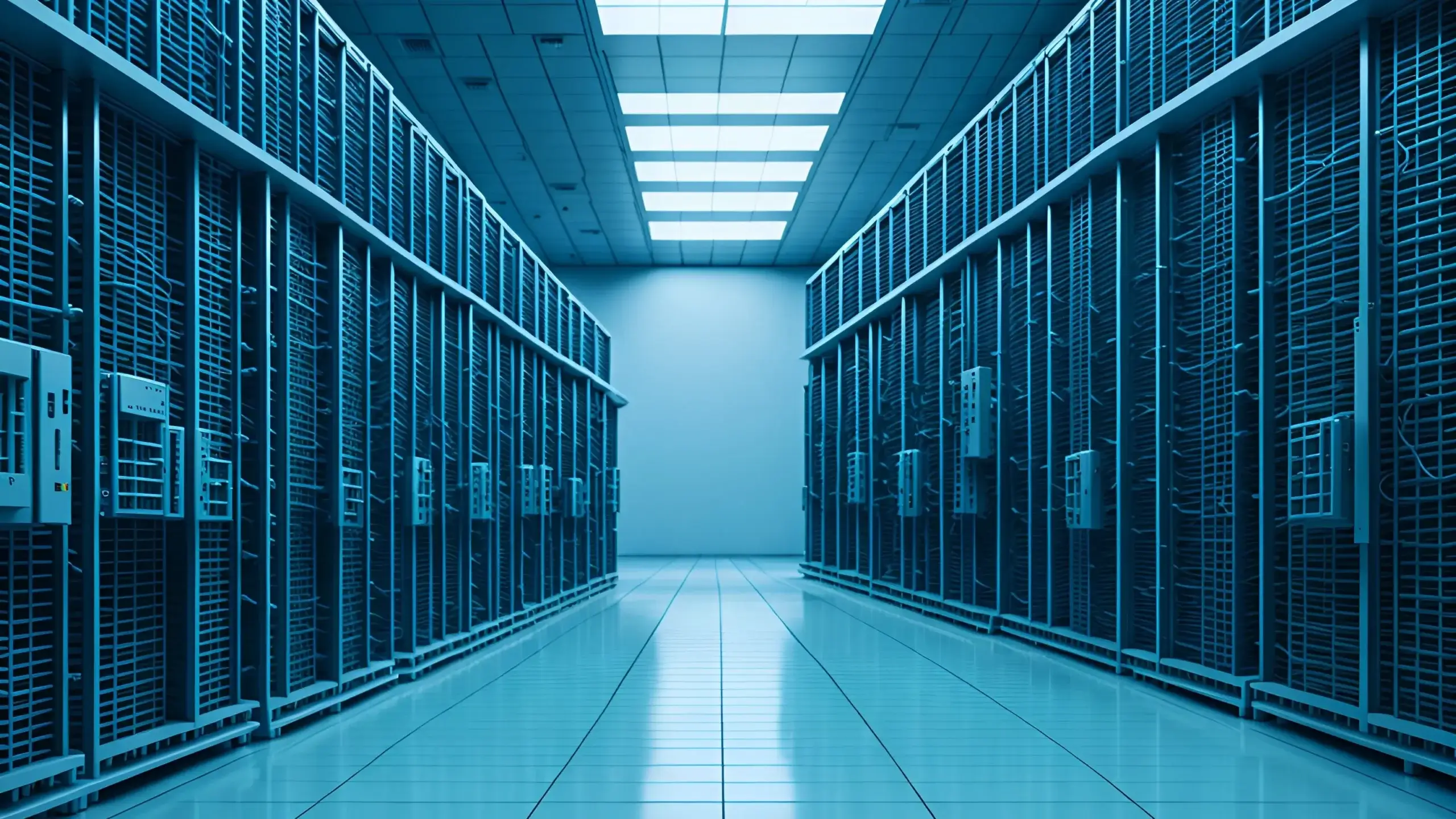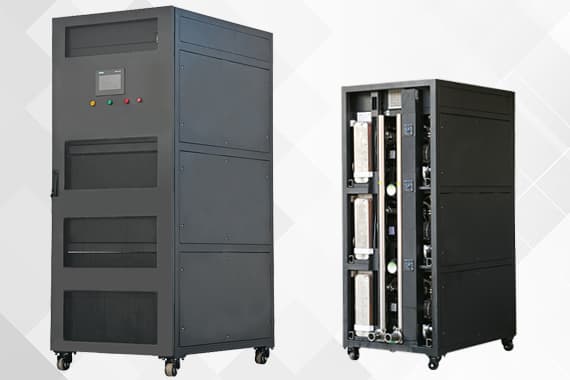As data processing demands continue to soar—driven by AI workloads, cloud computing, and high-density servers—traditional air-cooled data centers are reaching their limits. Rising power consumption, escalating cooling costs, and thermal bottlenecks have pushed operators to explore more efficient alternatives. One technology rapidly gaining attention is the immersion cooling data center, a facility designed to cool servers by submerging them directly into a specially engineered dielectric liquid.
This method, known as data center immersion cooling, is delivering impressive improvements in performance, cost efficiency, and sustainability. Below is a complete overview of what immersion cooling is, how it works, and why it may represent the future of high-density computing.
What Is an Immersion Cooling Data Center?
An immersion cooling data center is a facility where servers and IT hardware are cooled by being fully or partially submerged in electrically non-conductive liquid. Instead of relying on chilled air, the liquid absorbs heat directly from the components, transporting it efficiently to heat exchangers where it is dissipated.
Because liquids have much higher thermal conductivity and heat capacity than air, immersion cooling removes heat faster, more evenly, and with far less energy. The result is a more compact, efficient, and cost-effective data center environment.
How Data Center Immersion Cooling Works
Although system designs vary, most immersion cooling setups follow these core steps:
Servers are submerged in a tank filled with dielectric coolant.
The coolant absorbs heat directly from CPUs, GPUs, memory, and power modules.
Heated liquid rises and moves through a heat exchanger.
Chilled liquid returns to the tank, completing the loop.
Because heat is removed at the source and not through forced air, the servers can operate at stable temperatures, even under extreme loads. Importantly, server fans are removed entirely, eliminating noise, failure points, and unnecessary energy use.
Types of Immersion Cooling Systems
1. Single-Phase Immersion Cooling
In single-phase systems, the coolant stays in liquid form at all times. Heat is carried by natural convection or by a low-power pump to an external heat exchanger. These systems are:
Mechanically simple
Compatible with a wide range of fluids
Easy to maintain
Ideal for most enterprise and high-performance workloads
2. Two-Phase Immersion Cooling
Two-phase systems use a fluid that boils at low temperature. When components heat up, the fluid vaporizes, rises, and condenses on a cooling coil before returning as liquid. This method:
Achieves extremely efficient heat transfer
Supports very high power densities
Reduces pump requirements
However, it also tends to cost more and requires specialized tanks and vapor-sealed designs.
Immersion Cooling vs. Traditional Air Cooling
Traditional air cooling depends on moving large volumes of cold air through racks via fans, CRAC units, and ducting. As chip wattage increases, air becomes less practical:
Air’s thermal capacity is extremely low.
Fans consume significant electricity.
Hotspots form easily when airflow is obstructed.
By contrast, immersion cooling offers several advantages:
Greater Heat Transfer
Liquids absorb heat up to 1,000× more efficiently than air, enabling stable operation even at extreme power densities.
Lower Power Usage Effectiveness (PUE)
Many immersion cooling data centers achieve PUE values around 1.02–1.10, compared to typical air-cooled PUE values of 1.4–1.6.
High-Density Support
While air-cooling struggles past 15–20 kW per rack, immersion can support 50 kW, 80 kW, or even more per tank.
More Reliable Equipment
Dust, vibration, and humidity are eliminated. Servers operate in a clean, sealed environment, extending component lifespan.
Cost Efficiency: Why Immersion Cooling Saves Money
One of the primary reasons immersion cooling technology is gaining global momentum is its significant cost advantage. Savings come from multiple sources:
1. Reduced Cooling Power Consumption
Immersion cooling can cut cooling energy use by 40–50%, since no high-powered fans or oversized chillers are required. The coolant absorbs heat easily and transfers it efficiently.
2. Lower Infrastructure Costs
Air cooling requires:
Large CRAC/CRAH units
Complex ducting
Raised floors
Humidity control systems
Immersion cooling replaces all this with compact tanks and simple heat exchangers. Studies suggest total CAPEX for cooling infrastructure can be reduced by 30–40% in new-build data centers.
3. Lower Maintenance Costs
Immersion systems have fewer moving parts. With no server fans, clogged filters, or air pathways, ongoing maintenance costs can drop by 20–40%.
4. Higher Rack Density = More Revenue per Square Meter
Because tanks support higher density, operators can:
Deploy more servers in the same space
Delay or eliminate facility expansion
Increase revenue per rack or per power block
5. Waste Heat Reuse
The warm coolant leaving the tank can be reused to heat buildings, industrial water, or agricultural facilities—turning waste into value.
Challenges and Considerations
While the benefits are significant, there are obstacles to wider adoption:
Hardware Compatibility
Not all server models are designed for immersion, and some require modifications such as fan removal or fluid-safe materials.
Coolant Cost and Availability
Dielectric fluids are more expensive than water and must be carefully maintained, filtered, and monitored.
Technical Training
Technicians need to learn new handling procedures for submerged hardware, including safe draining and cleaning.
Retrofitting Limitations
Converting an air-cooled facility to immersion cooling is complex and often costly. Immersion performs best when planned from the beginning of a data center’s design.
Real-World Examples and Adoption Trends
Major companies are actively deploying or testing immersion cooling:
Microsoft has operated fully immersion-cooled data centers to support cloud and AI workloads.
Alibaba Cloud has reported double-digit power savings and PUE improvements using immersion systems.
Large-scale Bitcoin mining farms frequently use immersion cooling due to its ability to support extremely high-density compute clusters.
The global market for immersion cooling is expanding rapidly, driven by AI GPUs, edge computing, and sustainability targets.
The Future of Immersion Cooling Data Centers
As chips continue to scale beyond 300–500 watts and high-density workloads become mainstream, immersion cooling is expected to play a central role in next-generation data centers. With environmental regulations tightening and power costs rising, operators are prioritizing energy-efficient, space-saving, and sustainable cooling solutions.
Immersion cooling data centers align perfectly with these priorities—delivering lower PUE, lower energy costs, and higher performance per square meter. While not yet universal, immersion cooling is transitioning from a niche technology to a practical, scalable solution for modern computing demands.
FAQ About immersion cooling data center
FAQ 1: What is an immersion cooling data center?
An immersion cooling data center is a facility where servers and IT equipment are fully or partially submerged in a thermally conductive dielectric fluid. This method greatly improves heat dissipation compared to traditional air cooling, allowing higher energy efficiency, lower operating costs, and increased computing density.
FAQ 2: How does immersion cooling work in data centers?
Immersion cooling technology works by placing servers directly into a non-conductive liquid that absorbs heat from the hardware. The heated fluid is then circulated through a heat exchanger to remove excess heat. This approach reduces the need for mechanical cooling systems, boosts performance, and supports high-density workloads such as AI and crypto mining.
FAQ 3: What are the benefits of using immersion cooling for data centers?
The key immersion cooling benefits include significant energy savings, reduced noise, lower carbon footprint, improved hardware reliability, and the ability to deploy high-performance computing in compact spaces. Many organizations adopt immersion cooling to cut operational costs and enhance sustainability.





